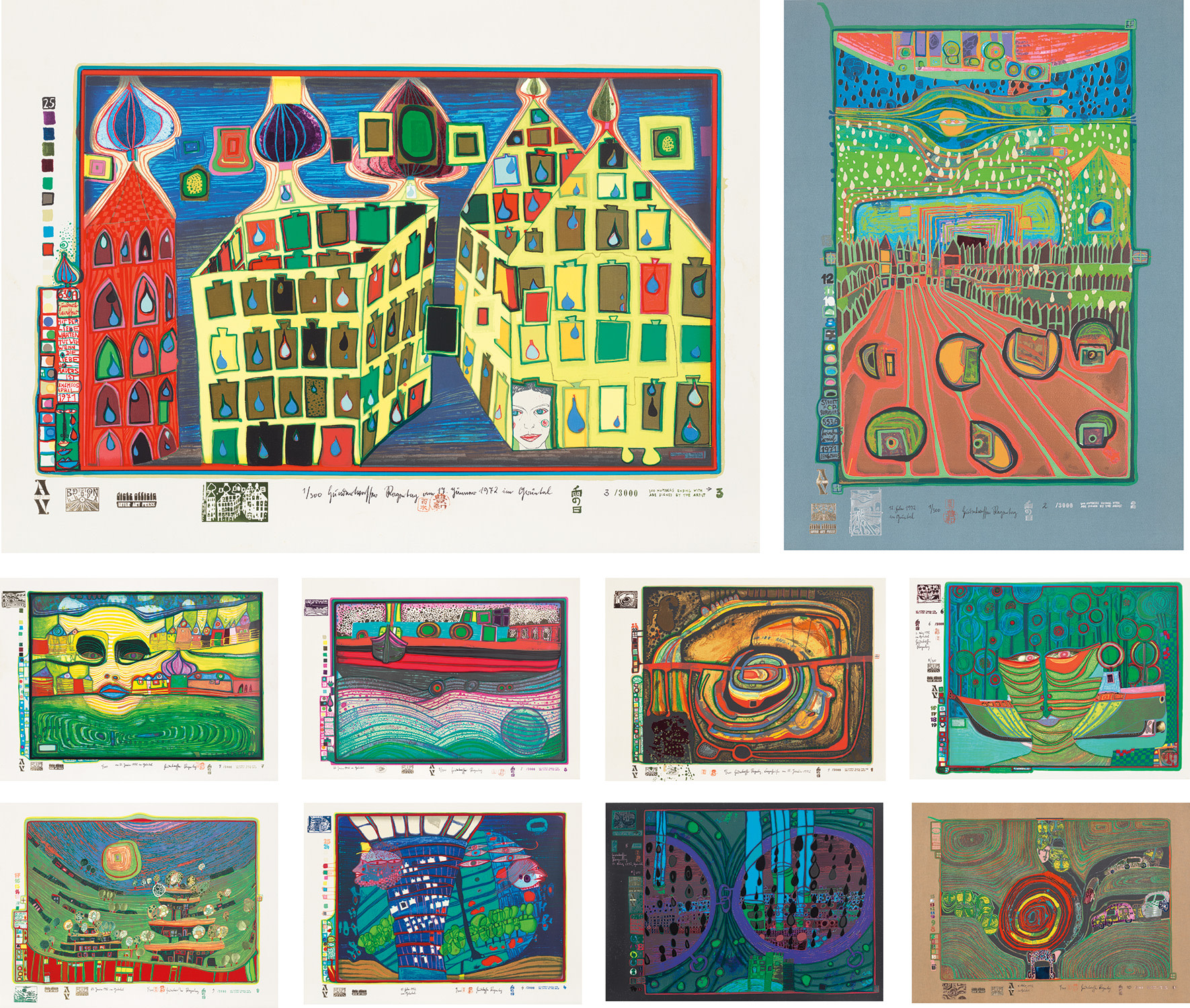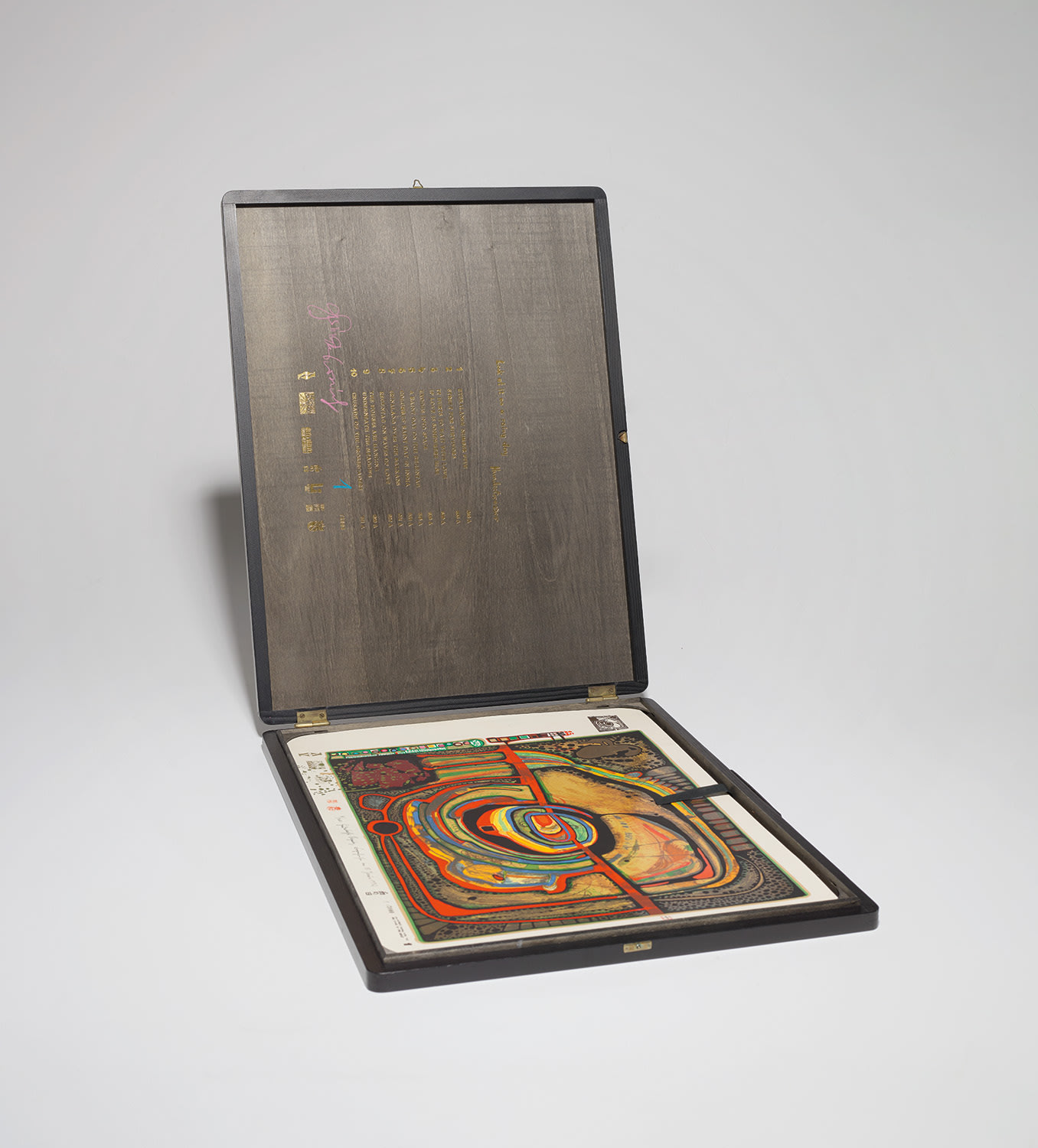





Property from an Important European Collection
105
Friedensreich Hundertwasser
Look at it on a Rainy Day (Regentag portfolio) (K. 44-53)
1970-72
The complete set of 10 screenprints in colours with embossing, some with lacquer varnish and glowing dust, on various papers, with full margins, the sheets loose (as issued) all contained in the original decorated wooden portfolio box.
all I. approx. 39 x 59 cm (15 3/8 x 23 1/4 in.)
all S. approx. 49.3 x 67.2 cm (19 3/8 x 26 1/2 in.), one vertical
portfolio 54.8 x 72.5 x 4.5 cm (21 5/8 x 28 1/2 x 1 3/4 in.)
all S. approx. 49.3 x 67.2 cm (19 3/8 x 26 1/2 in.), one vertical
portfolio 54.8 x 72.5 x 4.5 cm (21 5/8 x 28 1/2 x 1 3/4 in.)
All signed and numbered 1/300 in black or pink ink, and consecutively numbered from 1 to 10 in black or pink ink, presumably this group of ten compiled from 300 examples signed by hand (standard editions only had one sheet hand-signed per set), from the total edition of 3,000, further signed in pink crayon and numbered '1' in blue crayon inside the box, published by Ars Viva, Zurich (seven with the Schoeller Stern blindstamp), all unframed.